CAMtastic Newsletter October 2023
New Tools and Tech Fine-Tune the School of Music Audio Lab
Students in CAM’s School of Music are excited about an upgraded audio lab that provides extensive new equipment and makes homework easier.
“It’s nice to have [this lab] because I know music technology is becoming a big thing,” sophomore Mckenzie Rider said…“Using stuff like MuseScore, and there are other programs, like Sibelius, and stuff like that to write music and to be creative. It’s really nice to have the access to that here as a music student.”
SoM Director Dick Kelley said the space is set apart from other computer labs around the university because of music-specific software, including Ableton, ProTools, Logic and music-notation programs. Then there’s the hardware.
 “The college got a little bit of money to put together to buy these Mac Minis, we got new monitors, there's MIDI keyboards that are also functional with all the digital audio workstation, station programs. And then there's also connectivity so the students can bring in their own equipment, and there's just plug it in through USB. They can monitor everything with headphones,” Kelley said.
“The college got a little bit of money to put together to buy these Mac Minis, we got new monitors, there's MIDI keyboards that are also functional with all the digital audio workstation, station programs. And then there's also connectivity so the students can bring in their own equipment, and there's just plug it in through USB. They can monitor everything with headphones,” Kelley said.
Up next, a big TV up front which will allow everything to be interactive via Zoom.
“So, if a student…is working on a project, and everybody wants to see it, it'll be up there on the big projector. That's really nice,” Kelley said.
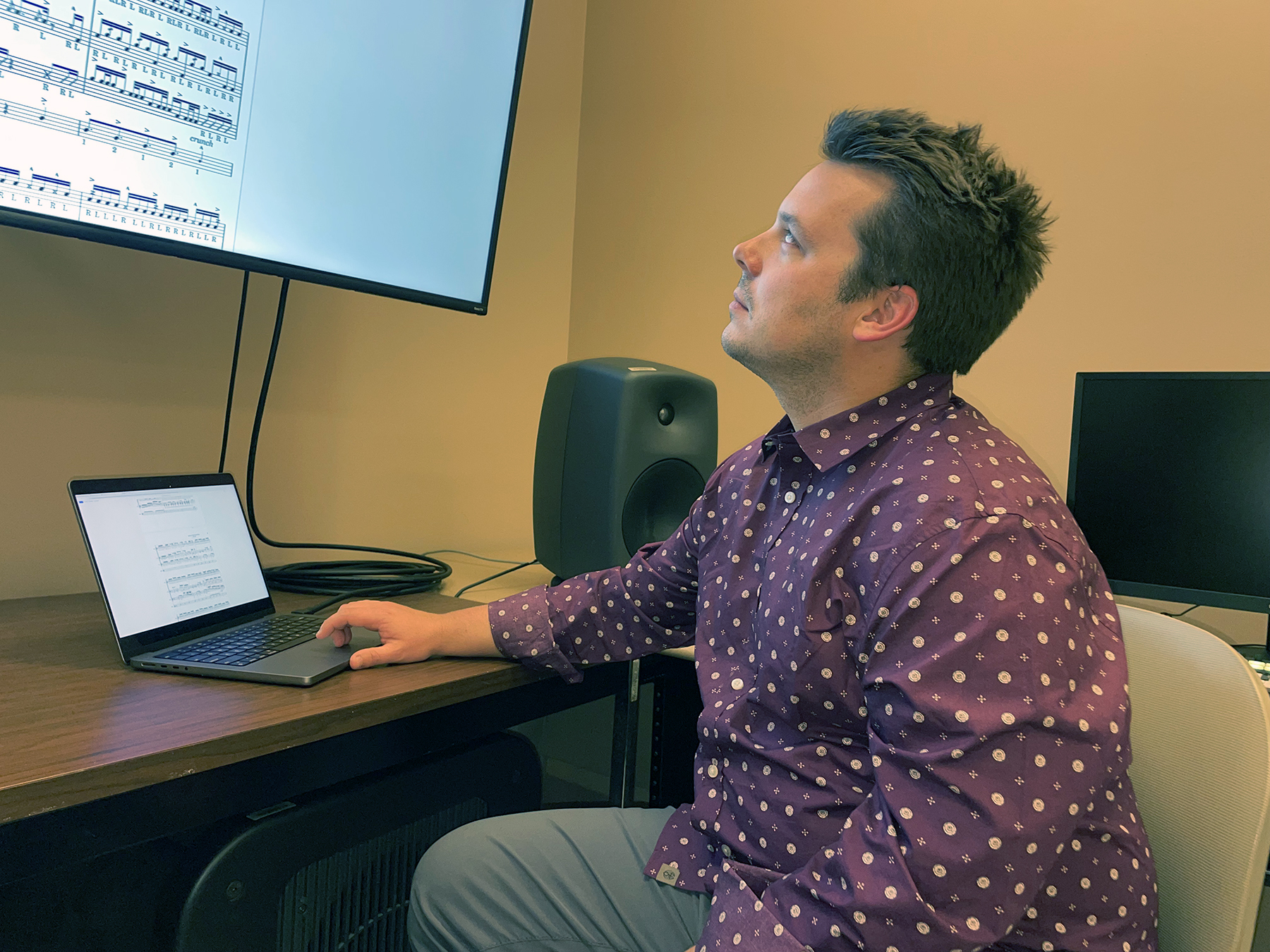 The school has also upgraded its Center for Experimental Music in the Altgeld basement.
The school has also upgraded its Center for Experimental Music in the Altgeld basement.
“There's three rooms down there, that we did the same thing, but kind of on steroids. We got like the really top of the line Mac Minis. And then those also have reference monitoring speakers, so like studio quality monitoring speakers, and all kinds of surface controllers, MIDI keyboards, and a lot more software,” Kelley said.
All the new goodies were possible with help from an unnamed Alumni Foundation donor. That person will be identified later, after even more is done.
Kelley said the average student traffic in the lab is constantly growing.
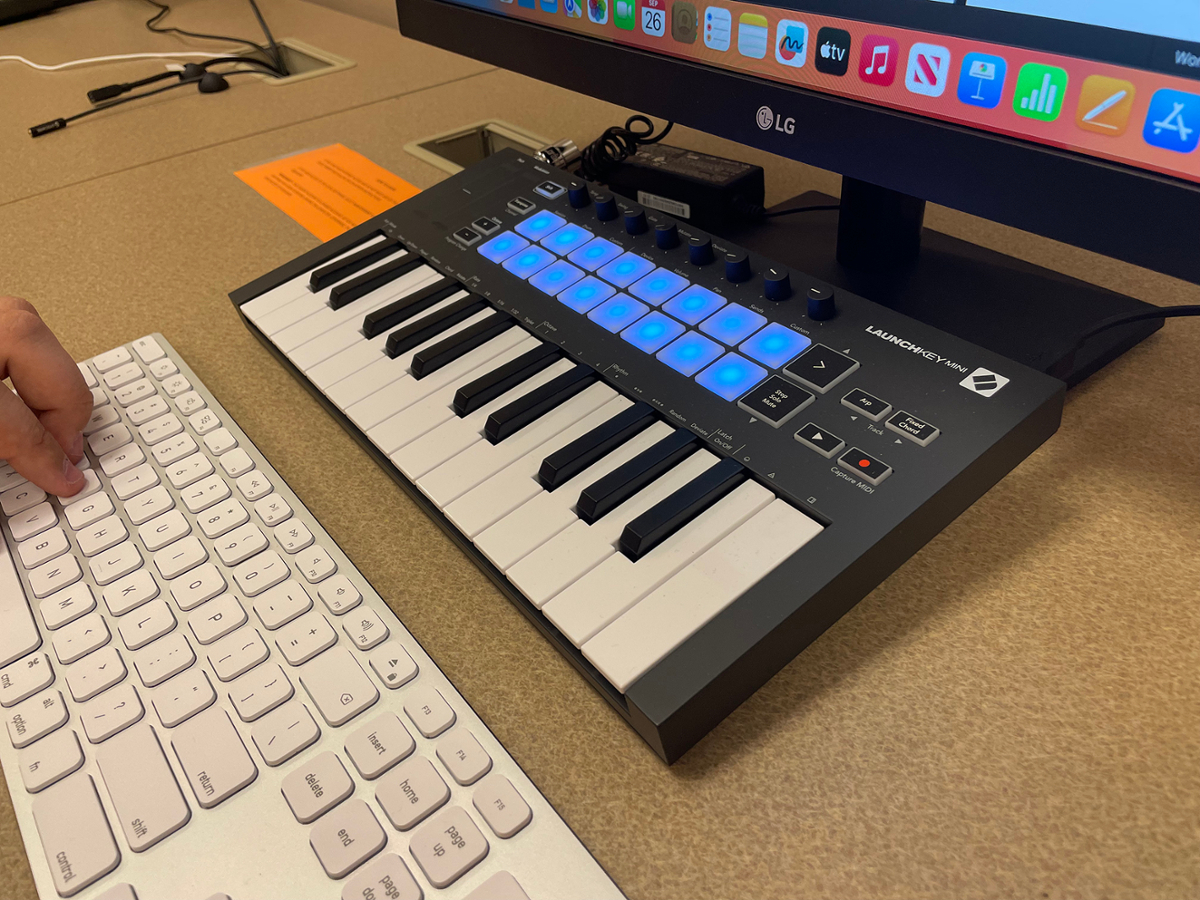 Since it's brand new, I think a lot of students aren't used to using it yet. But we've started to see it really uptick as the semester has gone on,” Kelley said. “So, like the first week, it was like, ‘okay, there's three or four people filtering in here and there.’ But yesterday, I walked by middle of the afternoon, and there was like nine students sitting in there. So, I think as more students get more comfortable using it and realize it's there, it's going to continue to grow.”
Since it's brand new, I think a lot of students aren't used to using it yet. But we've started to see it really uptick as the semester has gone on,” Kelley said. “So, like the first week, it was like, ‘okay, there's three or four people filtering in here and there.’ But yesterday, I walked by middle of the afternoon, and there was like nine students sitting in there. So, I think as more students get more comfortable using it and realize it's there, it's going to continue to grow.”
Freshman Riley Klevorn is one of the students taking advantage of the lab.
“We just did this project that we were writing a drum cadence. So he [Associate Professor of Practice Chris Butler] gave us a few days to write it, so I just spend the last few days in here, just working on that, which is really convenient considering that is where my classes are or I can just come here when I have free time.” Klevorn said.
 Freshman Blaine Mayo has used the lab “three of four times.”
Freshman Blaine Mayo has used the lab “three of four times.”
“If I have a break, there’s no reason for me not to come in here,” Mayo said.
Kelley said the lab is far from completed, with plans to get interfaces that will allow students to bring in a microphone and plug in midi instruments like guitars, and have it workable on screen.”
“We're currently designing a Music Technology degree and program,” Kelley said. I think once that gets implemented, we'll continue to expand from there.”
Film Professor Seeks to Open Minds and Open Doors for Students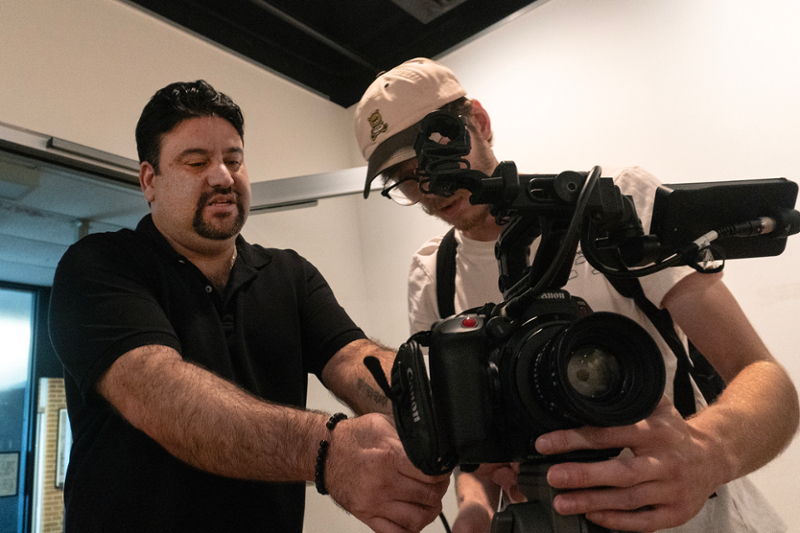
Award-winning director Pirooz Kalayeh describes himself as a multi cross-pollinated storyteller that wants to give a voice to the voiceless. The assistant professor of screenwriting and film production in the School of Media Arts says he wants people to recognize their fellow humans are struggling just to express themselves in closed societies, like his home country of Iran.
One of his chief goals is to show “how difficult it is for people in that segment of the world to try and make it out.
“So, when they are trying to come to America, there is more a sense of understanding of any type of immigrant and what they might go through, so that we might be that type of country that we’ve always been, which is an immigrant country with open arms,” Kalayeh said.
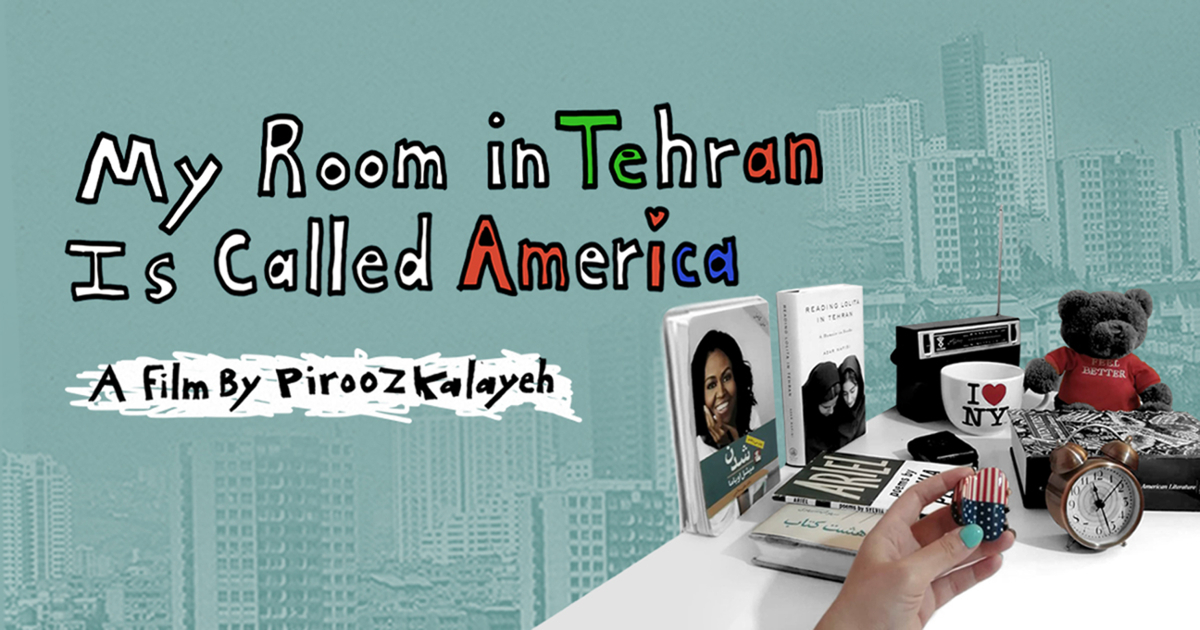 His current passion project is the documentary “My Room in Tehran is called America.” It focuses on a female artist in Iran who cannot show or even talk about her art without fear of being arrested or even killed. She lives in a tiny room, sleeping on a mat by the refrigerator.
His current passion project is the documentary “My Room in Tehran is called America.” It focuses on a female artist in Iran who cannot show or even talk about her art without fear of being arrested or even killed. She lives in a tiny room, sleeping on a mat by the refrigerator.
“They told me they had named their room America, and that killed me. I was just so broken up. When I heard that, I thought ‘I have to tell this story,’” Kalayeh said.
While a trailer has been put online, it’s unclear when the documentary might be released because Kalayeh and others are trying to get the artist to safety.
“Then we can start putting out some of this content without them being in danger.”
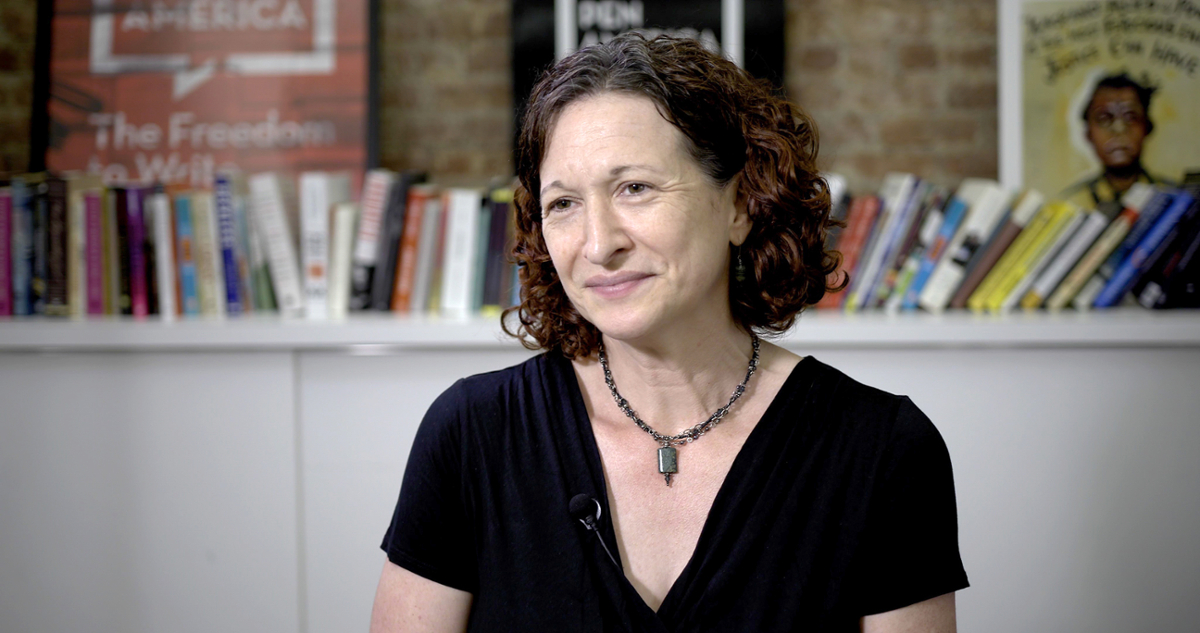 Kalayeh is perhaps best known for his film “Sometimes I Dream in Farsi,” based on his own childhood trauma. When he was just 9 years old, a barber refused to cut his hair because he is Iranian.
Kalayeh is perhaps best known for his film “Sometimes I Dream in Farsi,” based on his own childhood trauma. When he was just 9 years old, a barber refused to cut his hair because he is Iranian.
“In the film, we go back to the original barber shop and we do all these role plays with everyone to sort of see where microaggressions come from. Why this disunity at this moment in America, but also back then sod sort of retracing our footsteps,” Kalayeh said.
He blacked out the experience for decades.
“I repressed the trauma. How the brain works is amazing. So, when I was 40, I remember it and that’s why I dealt with it later.”
“Sometimes I Dream in Farsi” was named best U.S. documentary by the New York Independent Cinema Awards. It is available for streaming on Amazon Prime.
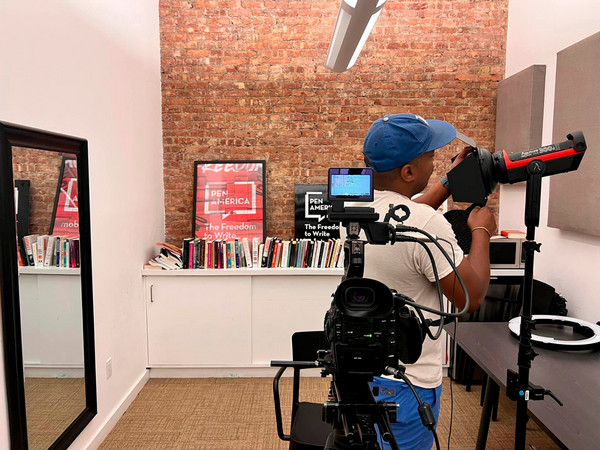 Kalayeh got into making movies when he was in middle school, encouraged by history teacher Jay Cheeseman. In the spring of 1990, at the age of 12, he created a film called “Slave Chase,” which took on the heavy themes of racism and slavery, imagining if the South had won the Civil War. Kalayeh made the film after the teacher showed his class “Mississippi Burning.”
Kalayeh got into making movies when he was in middle school, encouraged by history teacher Jay Cheeseman. In the spring of 1990, at the age of 12, he created a film called “Slave Chase,” which took on the heavy themes of racism and slavery, imagining if the South had won the Civil War. Kalayeh made the film after the teacher showed his class “Mississippi Burning.”
“Jay Cheeseman said ‘Pirooz you don’t need to come to study hall any more.’ I said, ‘why?’ and he said, ‘I just want you to make movies from now on.’”
Kalayeh’s father didn’t share that enthusiasm for his son’s artistic endeavors.
“My father, as an immigrant, didn’t really want me to do those things, so I had to fight my way to those things,” Kalayeh said. “So first, I was a neuroscience major in psychology and biology, pleasing my immigrant parents, and then I joined a rock band. I toured with them. Then I went to the Jack Kerouac School of Disembodied Poets.”
Kalayeh eventually made his way to Hollywood and rose to a position as post-production coordinator for a nationally syndicated reality television program.
 “I was, like ‘what am I doing. I need to get back to writing’” Kalayeh said. “So, one of my friends, who is a poet said, ‘why don’t you come to Korea, just hang out and teach poetry.”
“I was, like ‘what am I doing. I need to get back to writing’” Kalayeh said. “So, one of my friends, who is a poet said, ‘why don’t you come to Korea, just hang out and teach poetry.”
While in Korea, Kalayeh started interviewing his favorite artists around the world and asking them to collaborate on artistic ventures like songwriting, poetry and filmmaking. These projects would foreshadow Kalayeh’s key production during the COVID era.
As the world shut down, museum curator Roger M. Buergel asked Kalayeh to make a film about the pandemic for the Johanne Jacobs Museum.
“I said, ‘instead of giving you one little film about the pandemic, how about I give you 100 films,’” Kalayeh said.
He coordinated and direct people from all over the world, urging them to just give him “their authentic moments” of life during COVID. The result is “100 Films.”
“What a perfect illustration of the internet, but also, this idea that we’re all interconnected and woven together.”
Kalayeh found participants largely through social media and had them release their own portion of the film on the day it debuted, using the hashtag #100Films. He said he wanted to challenge the way movies are typically distributed.
It’s a philosophy he’s brought with him to the classroom. Kalayeh said “In order to be a media artist in the future,” he said, “you need to have your hand in many different pots…and I think one of the positive things about someone like me is that I can give them a scope and trajectory that includes something like Hollywood, but also can include them thinking about ‘well, how do I make my own production label at home? How do I join an advertising firm? How do I just make a brand and bring it out into the world.”
Another thing Kalayeh tells his students is to separate their creative mind from their editing mind.
“That is one way I help open up their potential,” he said. “I say that the creative mind is always open and willing to say yes. The rational and analytical are useful, but when we’re entering class, or we’re entering the artistic space, we want to put our creative hats on…you’ve got to be willing to be open and to question.”
“Unofficial” Halloween Echoes SIU’s Partying Past: How to Stay Safe While Celebrating
It's no surprise to many of you that SIU has a past of partying, or even that it was once known as the biggest party school in America. But what some of you may not know is how it earned that title. The biggest contributor had to be the Halloween celebrations dating back to the 70’s. Halloween parties at SIU had everyone's attention. People came from all over the US to partake in the events leading up to Halloween.
However, things started to get out of control. Cars started being flipped, store windows were being broken and the volume of arrests were out numbering the police. In 1988, Carbondale officials decided to ban in-town alcohol sales the entire week before Halloween in attempts to reduce the damage and the number of the parties. In the 90’s, they decided that still wasn't enough to curtail the partying and they mandated students living in the dorms take a 5-day break leading up to Halloween.
But of course, there is no stopping college kids from their parties leading up to our now beloved tradition of “unofficial” Halloween. But why would this matter so many years later? This year, there happens to be a major crossover with all the beloved drinking events in Carbondale. The SIU homecoming football game, whether we win or lose, will be an excuse to drink with some buddies during and after the game. Some of our locals and students will be celebrating Vulture Fest in Makanda, Illinois. Vulture Fest is a music and arts festival that happens during the vulture migration, and always draws a large crowd. These two events, along with unofficial Halloween, are all taking place in the same weekend.
I think one of the most important things to note with all these events is how to have a fun and safe experience. If you plan on drinking, eat something and drink plenty of water before, and even after, you go out. If you choose to drink, know your limits. Go out with people you trust and watch out for your friends. Don’t let intoxicated friends leave with someone they do not know well. Make sure no one walks home alone. Do not let an intoxicated person drive. Take keys away or call a ride-share or cab when necessary. Do not transport open containers of alcohol. Report any strange activity or broken or damaged items to the host(s) of parties.
If you are throwing a party, keep this in mind. It is important to decide who will be sober and monitor the party for safety and potential risks. Have non-alcoholic options available. Monitor outside noise levels and guests seeking fresh air. Guests should not drink alcohol in excess. If so, cut them off and get them to sober up. Guests need a safe, sober ride home. And again, take away keys when necessary. After the party, inspect your house or apartment and check for guests needing assistance getting home.
Most importantly, call 911 if safety concerns arise.
And for anyone still searching for the perfect couple’s costume, may I just say that a dead jackrabbit and a vulture would be very fitting.
Upcoming CAM Events
Empty Bowls – Art for your Table, Food for the Community, October 14th, Neighborhood Co-op
Blood at the Glove, SIUC, October 27th, Surplus Gallery
Annual fundraiser hosted by Critical Forum. Featuring: music, snacks and drinks, costume contest, and art by students and art community. $5 general admission, $1 admission for age 12 and under. October 27, 6-9 pm, SIU Surplus Gallery, 432 South Washington Street, Carbondale, Illinois.
Iron Pour, SIUC Art Foundry, November 4th
Halloween Spooktacular Concert, October 29th, Shryock Auditorium
A free Halloween Concert for all ages will be performed at Shryock Auditorium on the Southern Illinois University Campus Sunday, October 29th at 7 p.m.Come in costume (or not) and enjoy scary, fun, weird and classy music.
This concert is organized and sponsored by the Southern Illinois Chapter of the American Guild of Organists. Because our Chapter is dedicated to inspiring people of all ages to become organists, our Chapter has created a Scholarship program. Some of our Scholarship awardees will be playing at the concert.
The mission of the American Guild of Organists is to foster a thriving community of musicians who share their knowledge and inspire passion for the organ. The vision of the American Guild of Organists is to engage, support and uplift every organist. Our Chapter covers the tristate area of Southern Illinois, Western Kentucky and Southeast Missouri.
For more information, contact Jane Otte, ottejane@gmail.com
Ride the Cyclone – the Musical, October 12th, 13th, 14th, at 7:30pm and October 15th at 2pm at the McCloud Theater